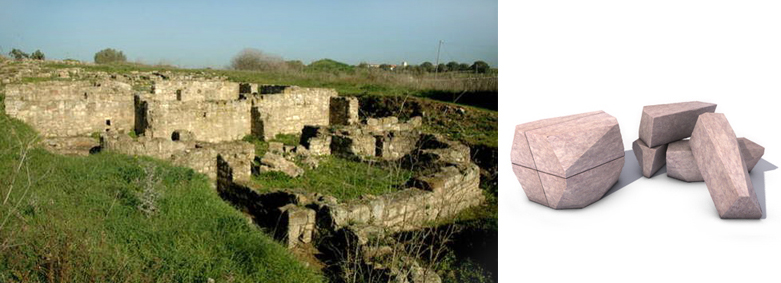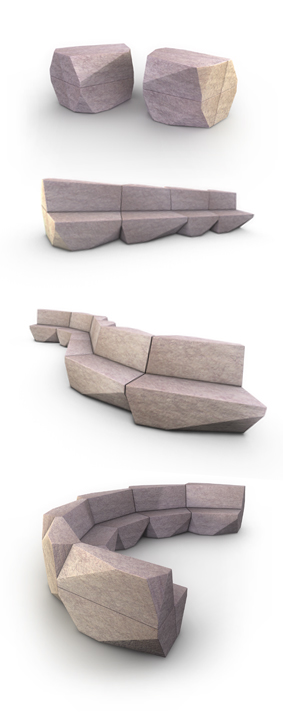RUINS
INDUSTRIAL DESIGN MASTER - THESIS PROJECT
Institution IADE Creative University
Master's Supervisor Diamantino Abreu
Year 2008
The urban intervention aimed to achieve with this project sets from a social necessity of gathering an urban population with its natural environment. The investigation process and further intervention focus on certain fields like ecology, environmental and social psychology and technical infra-structures development. Cities development depend on a vast number of infra-structures, each playing its crucial role in the city dynamic system. Within this system, public spaces link individual spheres and connect each and everyone of us one way or another. It is my believe that public natural areas, like parks or gardens, are of vital importance in this systems for it's psychological, environmental, cultural, social and even human effect in our societies. But are we implementing this structures in their right location and connecting them individually with each population target the most efficient and accurate way?
From a portuguese point of view, living in Lisbon all my life, i recognize that some efforts have been made to adress this issues but we always forget the culture and social backgrounds related to each place. Places have histories and people relate to their history in particular ways and almost everyone and every place as a history to tell. However, public parks, now more than ever, are losing their identity and purpose simply because we don't look at them as an oportunity to revive cultures, local economies and individual healthcare of local population. We simply implement them as a natural environment but we haven't been able to establish a coherent link bettewen populations and this natural element. Adding to this, the maintaince of this areas are expensive and the human intervention is disproporcinal to their general size. In between we end up losing the natural factor that should have never been lost.
That been said, how can we connect local populations to a natural environmet? How can a public park help local economies? And how can we minimize the human intervention related to the maintaince of a public park? These are the questions that my thesis pilot project sets to adress, compiling a series of informations about the local background and local inquierings on what would the local population would expect from a public park in their surroundings.
From a portuguese point of view, living in Lisbon all my life, i recognize that some efforts have been made to adress this issues but we always forget the culture and social backgrounds related to each place. Places have histories and people relate to their history in particular ways and almost everyone and every place as a history to tell. However, public parks, now more than ever, are losing their identity and purpose simply because we don't look at them as an oportunity to revive cultures, local economies and individual healthcare of local population. We simply implement them as a natural environment but we haven't been able to establish a coherent link bettewen populations and this natural element. Adding to this, the maintaince of this areas are expensive and the human intervention is disproporcinal to their general size. In between we end up losing the natural factor that should have never been lost.
That been said, how can we connect local populations to a natural environmet? How can a public park help local economies? And how can we minimize the human intervention related to the maintaince of a public park? These are the questions that my thesis pilot project sets to adress, compiling a series of informations about the local background and local inquierings on what would the local population would expect from a public park in their surroundings.
PROJECT
For the pilot project itself, the intervention would focus on a wild area in São Domingos de Rana, Oeiras, Portugal. Three issues were to be considered in the development of this project:
1. Connecting the local population history to a new public park;
Locally there are Roman ruins, an ancient village practically ignored by the local government and are not even linked to any touristic plan of the city. Some local people are not even aware of the existence of these ruins, as some local interviews revealed, but they were a crucial part of this pilot project. They were the inspiration for the overall design of the main structural elements that were to be literally integrated in the landscaping for the public park.
2. Use local material in the development of structural design;
For the structural elements materials the choice was easy, Stone. Not only because of the aesthetic look of the ancient ruins but also because of a local stone extraction site that could supply this material and produce the elements locally reducing production and transportation costs. The overall look of the Roman Ruins was therefore guaranteed and adicionaly the project could economically help the local extraction company with the production of this elements.
3. Minimize the human intervention related to the maintenance of the public park;
Public Parks can be extremely expensive regarding its maintenance. Mainly because of the use of many different plants which require different cares and water consumption. The big picture of this project relies on the premise that human interference should be minimized as much as possible. To achieve this an initial investment certainly as to be made but after that, the park should evolve naturally with minimal human maintenance and interference, using self sustained trees and plants thus creating a micro-ecosystem that can survive for its own. And this is the natural aspect that currently i feel that is absent from nowadays public parks. We see too much of human hands in this natural environments that, in my view, should be naturally minimized.

Right A SINGLE MODULE OF FOUR PARTS, CAN BE COMBINED IN NUMEROUS DIFFERENT WAYS

SOME MODULE COMBINATIONS

INTEGRATION OF THE STRUCTURAL ELEMENTS IN THE PARKS LANDSCAPING, CREATING THE AESTHETIC LOOK OF THE ROMAN RUINS

